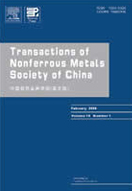Photocatalytic degradation of phenol in aqueous solution using
TiO2/Ti thin film photocatalyst
TiO2/Ti thin film photocatalyst
(1. Department of Chemical Engineering,
Taiyuan University of Technology, Taiyuan 030024, China;
(2. Guangzhou Institute of Energy Conversion,
Chinese Academy of Sciences, Guangzhou 510070, China;
3. Guangdong Key Laboratory of Agricultural Environment Pollution Integrated Control,Guangdong Institute of Eco-Environment and Soil Sciences, Guangzhou 510650, China)
Taiyuan University of Technology, Taiyuan 030024, China;
(2. Guangzhou Institute of Energy Conversion,
Chinese Academy of Sciences, Guangzhou 510070, China;
3. Guangdong Key Laboratory of Agricultural Environment Pollution Integrated Control,Guangdong Institute of Eco-Environment and Soil Sciences, Guangzhou 510650, China)
Abstract: In order to clarify the respective role of the UV light, catalyst, external bias as well as their combined effects on the photodegradation process and to clarify the photocatalytic mechanism under different experimental conditions, a series of experiments were conducted in a shallow pond photoreactor with an effective volume of 100mL using TiO2/Ti thin film prepared by anodization as photocatalyst. A 300W UV lamp(Emax=365nm)was used as side light source. The effect of light intensity on photocatalysis was also conducted. The results show that photocatalytic oxidation is an effective method for phenol removal from waters. The degradation rate can be improved by applying an anodic bias to the TiO2/Ti film electrode, phenol can not be decomposed under only 365nm UV light irradiation even in the presence of hydrogen peroxide. In the range of our research, the phenol removal rate can be described in terms of pseudo-first order kinetics.
Key words: phenol; TiO2/Ti film; photocatalysis

